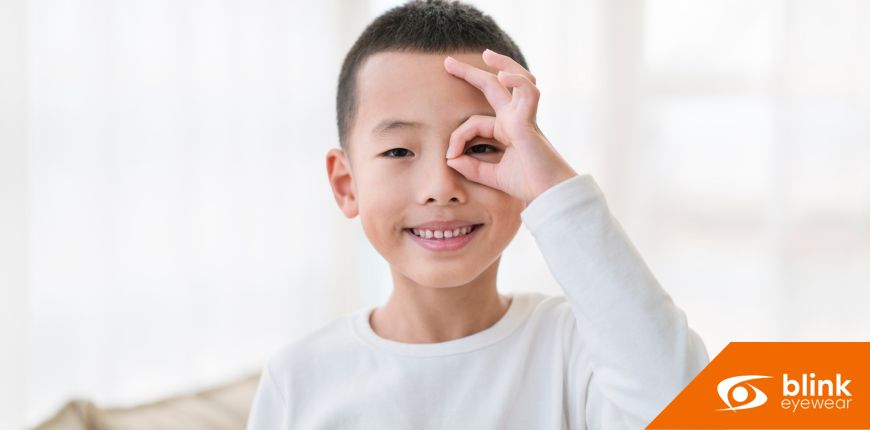
The importance of early detection and timely intervention to safeguard children's visual health and overall well-being is key to learning what visual impairment your children may have. Recognizing common eye conditions such as myopia (nearsightedness) and hyperopia (farsightedness) in children is vital to ensure their visual health and overall well being. Additionally, early diagnosis can help prevent potential complications in your child’s future. Regular eye exams are encouraged from a young age to promote healthy vision to support children in exploring the world with clarity and confidence. By prioritizing children's eye health, parents and caregivers can pave the way for a brighter future for their young ones.
Common Eye Conditions in Children: Recognizing Signs and Seeking Prompt Treatment
As parents, our children's well-being is always a top priority. When it comes to their health, their eyesight is of utmost importance. Children may encounter various eye conditions that, if left untreated, could impact their development and quality of life. In this blog, we will explore some common eye conditions that affect children, recognize the signs of these conditions, and emphasize the significance of seeking prompt treatment to ensure their visual health
Myopia (Nearsightedness)
Myopia, or nearsightedness, is one of the most prevalent eye conditions in children. It occurs when a child can see nearby objects clearly but struggles to focus on distant objects. Recognizing the signs of myopia is essential for early intervention. Watch for frequent squinting, sitting too close to screens or books, or difficulty seeing the board at school. If your child displays any of these signs, it's crucial to schedule a comprehensive eye exam with an optometrist. Early detection and the right corrective measures, such as glasses or contact lenses, can help prevent further progression and support their learning and daily activities.
Hyperopia (Farsightedness)
Hyperopia, or farsightedness, is another common eye condition in children. In this case, children can see distant objects more clearly than those up close. Children with hyperopia might experience eye strain, headaches, or difficulty focusing on close-up tasks like reading or writing. As with myopia, timely identification and treatment of hyperopia are vital. Regular eye examinations can aid in detecting farsightedness, and optometrists may prescribe corrective eyewear to help children comfortably engage in both near and far-distance activities.
Amblyopia (Lazy Eye)
Amblyopia, commonly known as a lazy eye, is a condition where one eye doesn't develop normal visual acuity. This may happen if the brain starts to favor one eye over the other due to misalignment or a significant difference in refractive errors between the eyes. Early diagnosis and intervention are crucial, as amblyopia becomes harder to treat with age. Signs of amblyopia include constant squinting, tilting the head to one side, or complaints about blurred or double vision. Eye patches or special drops to blur the strong eye, encouraging the weak eye to work, are typical treatments used by eye care professionals to correct amblyopia.
Strabismus (Crossed Eyes)
Strabismus, commonly known as crossed eyes, is a condition in which a child's eyes are misaligned. One eye may turn inward, outward, upward, or downward while the other remains straight. Strabismus can affect depth perception and cause visual confusion. Children with strabismus may experience difficulties with coordination, reading, and social interactions. It's essential to address this condition promptly, as untreated strabismus can lead to amblyopia. A comprehensive eye exam can diagnose strabismus, and early intervention through eye patches, eyeglasses, or eye muscle surgery can help correct the alignment and support healthy vision development.
Being vigilant about our children's health is a parent’s duty and privilege. Recognizing common eye conditions in children and seeking prompt treatment is vital to ensuring their visual health and overall well-being. Myopia, hyperopia, amblyopia, and strabismus are among the most prevalent eye conditions that can affect children's lives. Being attentive to signs like squinting, headaches, or difficulty seeing objects can guide us in identifying potential issues. Regular eye exams, preferably starting at a young age, play a crucial role in early detection and intervention. Early diagnosis allows for appropriate treatments, such as eyeglasses, contact lenses, eye patches, or surgery, to support healthy vision development and prevent long-term complications.
Remember, our children rely on us to guide them towards a bright and promising future. By prioritizing their eye health, we empower them to explore the world with clarity and confidence, allowing their dreams to soar to new heights. Let's work hand in hand with eye care professionals, embracing timely treatments, and nurturing our children's visual health so that they can envision a world full of possibilities.
Written on behalf of Blink Eyewear.